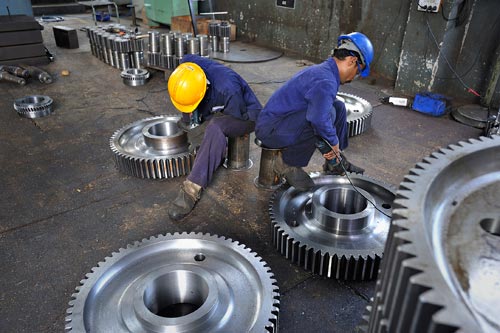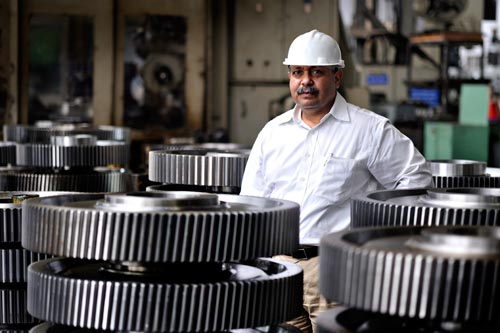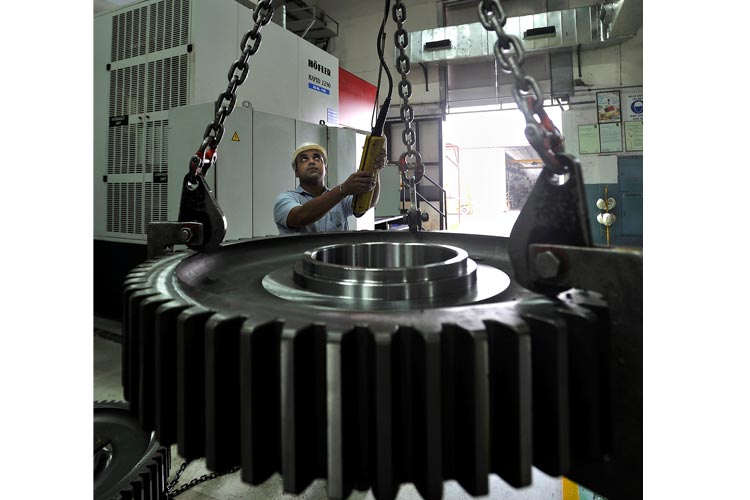Kirloskar Pneumatic turned around its stagnating gear manufacturing business by opting for the new indexable milling technology that resulted in a several hundred percent increase in productivity.
“It was critical,” Debashish Chakravarty says of the situation he found when he joined Kirloskar Pneumatic Co Ltd (KPCL) in Pune in 2010 as vice president and head of its transmission division, which makes traction gears for the sprawling Indian Railways network. “There was a huge backlog of orders of gears and pinions with late delivery charges and an extremely dissatisfied customer.”

There was only one CNC hobber; the others were conventional machines. With the hobs for cutting the gears either broken or worse, each shift was able to make only one gear, or two at the most. “In a month we made only 190 gears,” Chakravarty recalls. The CNC hobber had a huge capability, but the hob technology it used was outdated. Then he read online about Sandvik Coromant’s indexable insert tooling system and the high speeds that the gashing cutters were capable of. He says, “I told my bosses, ‘I want to change the technology to indexable milling cutters, as the new technology will tremendously reduce cutting time. I also need one more CNC hobber.’”
Since a Sandvik Coromant cutter cost seven times as much as a conventional cutter, nobody wanted to take the risk, Chakravarty says. But he was convinced that the new technology was crucial to turning the division around and clearing the huge order backlog. The decision amounted to a huge leap of faith for KPCL. “There was doubt and scepticism all around,” Chakravarty says. When the additional CNC hobber and the Sandvik indexable cutter were installed, the results were apparent immediately. Instead of the usual one gear per shift, the operation was on track to turn out two or even three gears. Satisfied, Chakravarty went home.

cutters.
Late that night, to his horror, he got a call saying an operator had damaged the cutter. “I was badly shaken up,” Chakravarty says. “It was such costly equipment.” Production was halted, and the next morning Sandvik Coromant representatives rushed to the scene. Luckily the cutter was only bent, not broken, and it was shipped to a Sandvik Coromant facility in Germany for repair.
While the naysayers around him looked on, Chakravarty received an immediate replacement from Sandvik Coromant free of charge. “It gave perfect results,” he says. Four weeks later the cutter returned, and Chakravarty says that for a time he had two cutters. Gear production jumped from 190 a month to 450, and Sandvik Coromant established both goodwill and trust.
After the first year, the cutting time for a gear had been reduced from 6.5 hours to just 45 minutes. “Nobody could believe it,” Chakravarty says.

The confidence in this approach triggered other solutions. When heat treatment became a bottleneck, Chakravarty got new fixtures, upgraded the process and increased the heat treatment capacity. Then he concentrated on bore grinding, reducing grinding allowances and increasing grinding capacity. “At every stage we found new solutions,” he says. With fast cutting and additional capacity, he is now adding new business– making industrial gearboxes for steel mills and cement plants, where the Sandvik Coromant technology will be used. Chakravarty’s biggest satisfaction is that his delivery rate with Indian Railways, a low 45 percent in 2010–11, rose steadily to 60 percent the next year and 86 percent the year after that. “In the current year it is 100 percent,” he says with pride.
He started using indexable cutters for other railway components, and today he uses 14 Sandvik cutters. Profitability has doubled. Sandvik Coromant representatives work jointly with his operation, modifying or changing things when necessary. “They give complete solutions and are reliable and transparent,” he says. “When something is not possible, they tell us.”
Now Chakravarty is working on a cutting solution that will be even faster – a Sandvik Coromant indexable hob.
Courtesy: Sandvik Coromant


